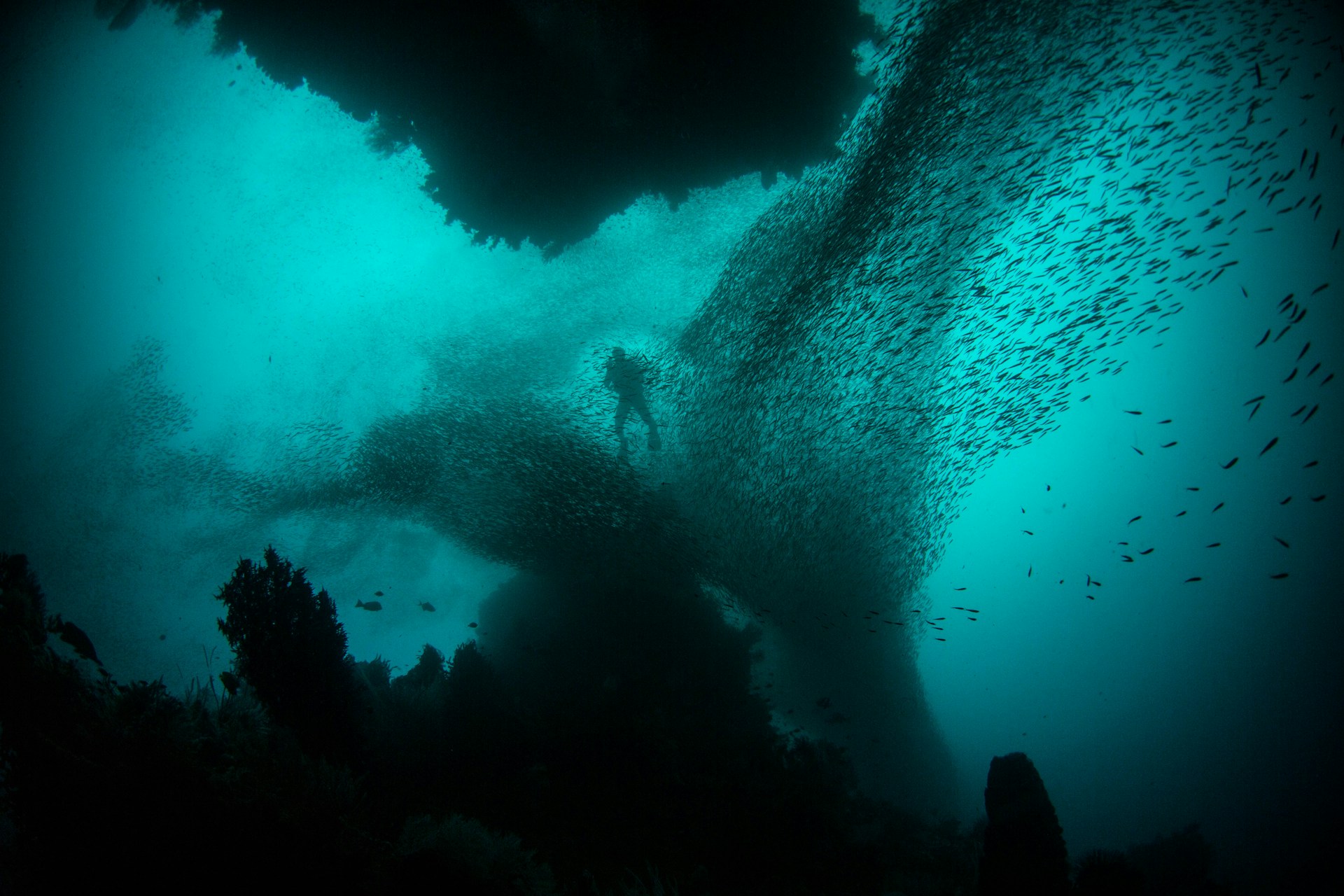
Have you ever stood on a beach, gazed at the vast blue ocean, and wondered what lurks beneath the surface? Maybe you envision different-colored fish, or even deep-sea creatures like the bioluminescent anglerfish, rarely seen in shallow waters but recently spotted near Spain. Or perhaps you think of sharks, thanks to Jaws. We often focus on the larger things we can see and overlook the real powerhouses of the ocean that are far too small to notice. When I went snorkeling for the first time, I was amazed by the pretty corals and fish, but it got me thinking about the invisible world of microbes. What role do they play in the ocean?
Marine microbes may be microscopic, but their impact is anything but small. A single drop of seawater can contain millions and millions of microbes, representing thousands of different species. They thrive everywhere, from sunlit waters to environments previously thought uninhabitable, like the pitch-black depths of the deep-sea. What would happen if humans tried to survive the deep ocean? Well, let’s entertain that thought for a bit. As you go deeper into the ocean, the light fades, temperatures plummet, and pressure intensifies. At 20 meters, you’d struggle to breathe, and at 100 meters, the pressure is crushing. If you somehow survived the first 100 meters (and that’s a big if), and dared to go even deeper, to 1000 meters or more, you’d officially enter the ‘nope’ zone. The crushing pressure would turn your body into a very unfortunate pancake, and the cold and darkness would swallow you. Not to make this article extremely morbid though, because this isn’t about humans finding ways to survive the deep-sea. While we couldn’t survive it, there are animals (and microbes!) that thrive in it. Hydrothermal vents, underwater volcanoes spewing superheated, toxic fluids, and freezing polar waters, are home to some of these microbes. Besides, they aren’t just surviving; they’re actively shaping their environments and influencing global systems.
So, how do they survive in such diverse and extreme places?
The answer lies in their genes: regions of DNA that encode the instructions or blueprints for producing proteins and molecules important for life. These proteins determine the microbes’ traits and functions, like their ability to metabolize specific nutrients, resist stress, or perform critical tasks like photosynthesis. Using sunlight, they convert carbon dioxide into energy, forming the base of the ocean’s food web and producing half the oxygen we breathe. They also help mitigate climate change by removing carbon dioxide from the atmosphere and storing it in the ocean.
Some marine microbes, called diazotrophs, have genes that convert atmospheric nitrogen into usable forms like ammonia. This process, called nitrogen fixation, is essential because nitrogen is a key nutrient often lacking in marine ecosystems. Other microbes break down oil spills or produce unique compounds, like antibiotics or anticancer agents, with applications in medicine and biotechnology. Without these microbes, marine ecosystems would simply collapse.
One of the most fascinating aspects of marine microbes is their ability to share genetic material through lateral gene transfer (LGT), even across species boundaries, which I’ll talk more about in future blog posts. This is how bacteria share secrets with one another: gaining new traits in the process, like antibiotic resistance, or the ability to survive extreme environments. As a PhD student at Dal, I’m exploring these questions by studying LGT in marine microbes. My research focuses on how these gene exchanges enable microbes to adapt to various environments and what this means for broader ecological processes. If you’re as intrigued as I am by the diversity and influence of marine microbes, keep an eye out for my next blog post!









